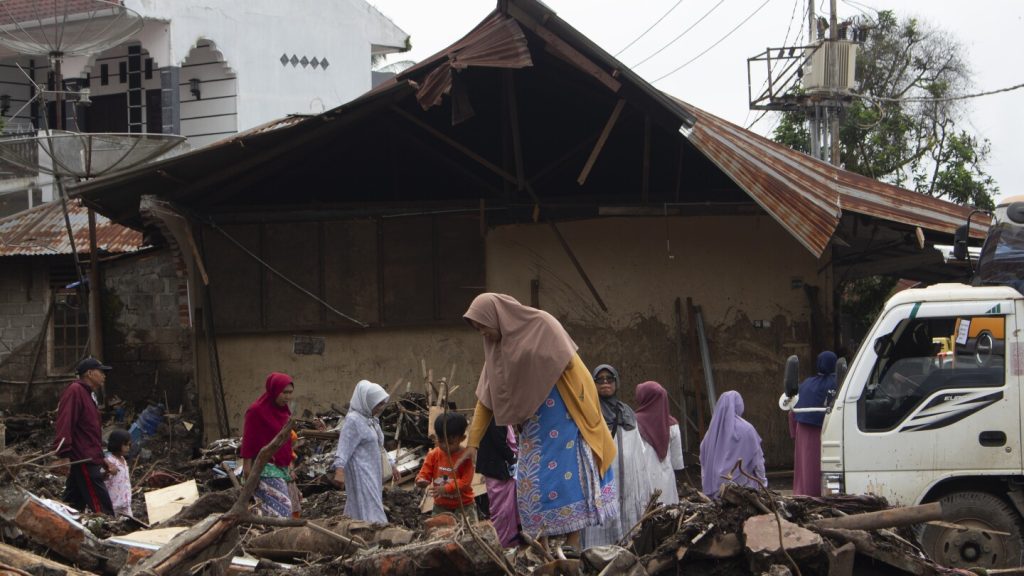Authorities in Indonesia have taken action to prevent further rain and flash floods after recent deluges on Sumatra Island left at least 59 people dead and 16 missing. Monsoon rains triggered a landslide of mud and cold lava from Mount Marapi, causing rivers to breach their banks and sweep through villages in West Sumatra province. The floods destroyed homes and forced over 1,500 families to flee to government shelters, with 59 bodies recovered and 16 people still missing. Cloud seeding was conducted to redirect rain away from affected areas and aid in search and rescue operations.
The National Disaster Management Agency chief stated that the emergency response will continue until May 25, assessing which areas are uninhabitable and in need of relocation. Indonesia’s Meteorology, Climatology and Geophysics Agency warned of more rain forecast for the region, with extreme rainfall expected to continue. An air force plane was deployed to shoot salt flares into the clouds to induce precipitation and prevent further damage in West Sumatra. A total of 15 tons of salt were prepared for the seeding operation to disperse particles into the clouds and modify the weather.
The country’s air force collaborated with the technology agency to conduct multiple rounds of cloud seeding using sodium chloride to trigger rain release and break up clouds before reaching devastated areas. Rescue teams searched through rivers and debris in affected villages, with roads transformed into muddy rivers and homes covered in thick mud, rocks, and uprooted trees. Indonesia, with its vast archipelago geography, is prone to frequent landslides and flash floods due to heavy rains, impacting many communities living in mountainous regions or near floodplains. Mount Marapi, an active volcano, has been a site of recent eruptions, highlighting the country’s susceptibility to seismic activity.
The Indonesian authorities continue to monitor the situation and conduct relief efforts in the aftermath of the devastating floods. The combination of natural disasters, including landslides, floods, and volcanic eruptions, poses significant challenges for the country in terms of disaster response and mitigation. With the ongoing threat of extreme weather events and geological phenomena, efforts to improve preparedness and response mechanisms are crucial for ensuring the safety and well-being of vulnerable communities. The collaboration between government agencies and the armed forces illustrates the coordinated approach taken to address the immediate impacts of natural disasters and protect the affected populations.
As the rescue operations continue and the affected areas are assessed for long-term recovery and relocations, the focus remains on supporting those displaced and rebuilding the infrastructure damaged by the floods. The resilience of the Indonesian people in the face of these challenges is evident, as communities come together to assist one another and recover from the devastation. With the support of local and international aid organizations, the government aims to provide necessary assistance to those affected by the recent disasters and prevent similar tragedies in the future through improved disaster risk reduction strategies and early warning systems. The efforts to seed clouds and divert rainfall demonstrate the innovative approaches employed to address the immediate impacts of natural disasters and protect the lives and livelihoods of the Indonesian population.


